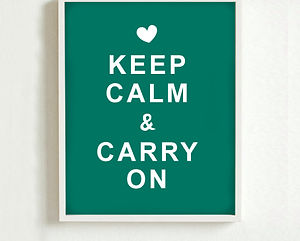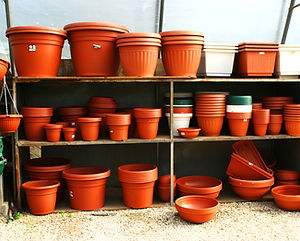
BLOG
STARTING WITH THE END IN MIND
to find your balance
As I prepare for a new year, Grant Wiggins’ and Jay McTighe’s lesson about the importance of “backward design” comes to mind. With the pressure of standardized tests and other accountability measures, we need to take time to examine what we really want our students to learn and know. I have a feeling that most of us teachers would not say that the real goal of education is to help students to pass tests. Perhaps we should use the content on which students are tested as a means to get to things we really want students to know and do. For me, some real goals are perseverance, compassion, love of learning and self-confidence.
Don’t forget to find today’s balance!

BALANCING NUMERACY
by looking at the vocabulary we use
I often explain to my students that mathematicians, scientists and linguists love to look smart and like to have their own vocabulary, when in actuality they are talking about the same thing. For example: mathematicians call it estimate, while scientists call it hypothesize, and linguists call it predicting. Linguists and scientist stress the importance of looking at things carefully, but linguists call it close reading and scientists call it observing. I always point this out to my students, in order to help them categorize ideas in their heads.
Don’t forget to find today’s balance!

BALANCE YOUR NUMERACY
by ordering numbers
Ordering numbers is almost like alphabetizing words. You start as far to the left as you can and compare from there. If the letter or number is the same, you move one place to the right. The trick with numbers however is that sometimes the digit on the farthest left is a 0. Be sure you look at the place value rather than simply looking at the digits that are there.
Don’t forget to find today’s balance!

BALANCE YOUR NUMERACY
by expanding your ideas of sentences
In language arts a complete sentence must have a subject, predicate and punctuation, otherwise it is not a complete sentence. In mathematics, however, a (number) sentence needs to have a relation symbol (=, <, >, < , > ) with digits on either side to be complete. Both kinds of sentences can be read and understood. Although number sentences are made up of symbols and numbers instead of words, they still need to communicate a complete thought.
Don’t forget to find today’s balance!

BUILDING STUDENT STRENGTHS
to find your balance
As teachers, it is our job to help students get better at reading, writing and mathematics. Unfortunately, we all have students who are not strong in one or more of those areas. These poor students are then often required to spend most of their days focused on these subject areas in order to get better at them. As adults, if we went to a job during which we spent most of our day doing things that were very difficult for us and very little time working with our strengths, we would probably quit. It is important to give our students time to work to build on their strengths.
Don’t forget to find today’s balance!

BALANCE YOUR NUMERACY
by rethinking fluency
For a long time fluency was typically used to describe how people read pieces of writing. Lately, however, we have been hearing more about “fact fluency”, and many people confuse it with simply memorizing and recalling math facts quickly. When we talk about reading fluency, we know students need to understand what they are reading in order to truly be fluent; they must understand what they are reading. The same goes for fact fluency. There is a difference between memorizing 5 + 8 = 13, and understanding, for example, that 8 can be broken down to a 5 and a 3, so there for 5 + 5 = 10 and 3 more is 13.
Don’t forget to find today’s balance!

BALANCING NUMERACY
by teaching close reading
Closing reading includes reading carefully, focusing on the details, and analyzing & evaluating text. We need to encourage students to do the same in math. As students read problems whether it is a number story or a simple addition problem, students need to read them carefully. A detail on which they may need to focus is whether the problem is an addition or subtraction problem, then analyzing whether the answer will be a larger number or a smaller number. Lastly, they need to evaluate whether or not their answer makes sense through estimating or another means.
Don’t forget to find today’s balance!

TEACHING GRATITUDE
to find your balance
As a teacher I give from my heart and therefore don’t usually look for much in return, I do, however, expect my students to show gratitude, not only to me but also to other staff, their parents and their classmates. I often give them a script, “Thank you Mrs. Smith for helping me with that problem,” and have them repeat it to the person they are thanking. Even more important, I teach through example. Anytime I can, I thank students, or anyone, even if it is simply for putting effort into a problem, or picking up a piece of paper off the floor.
Don’t forget to find today’s balance!

BALANCING NUMERACY
by decomposing numbers and decoding words
The other day I was teaching about decoding words. I taught about things such as looking for prefixes, suffixes, base words, and word parts, and I realized that we are simply decomposing words. A few days before we talked about decomposing numbers (We solved 8 + 5 by decomposing 8 to a 3 and a 5 and thinking 5+5 is 10 and 3 more is 13), so I pointed my realization out to my students, who kindly acted impressed. We can break down both numbers and words into smaller parts in order to better understand them.
Don’t forget to find today’s balance!

GETTING INTO A NEW RHYTHM
to find your balance
Starting school is like trying to shift a rhythm. When we play the drums or clap out a rhythm, at first, we need to be very focused on making that rhythm and need much more brain power in order to get the rhythm correct. However, after a time we start play the rhythm more subconsciously and need to use less brainpower to keep the rhythm going. Once we reach that point and then try to change that rhythm, it becomes a more conscious task again, even if we have played the rhythm before. May we all get back into our school rhythm soon!
Don’t forget to find today’s balance!

CLASSIFYING MISTAKES
to find your balance
This year I started the year by telling my students that we would be making lots of mistakes this year and that mistakes were a good thing. I had one student who thought he was helping to clarify by saying, “unless you do it on purpose.” As we discussed the fact that if you do “it” on purpose, it’s not a mistake, we started to realize that mistakes do come in many shapes and sizes. Mistakes can range from simple oversights or carelessness to misconceptions.
Don’t forget to find today’s balance!

TAKE INVENTORY OF YOUR COMPLAINTS
to find your balance
The other day, I was complaining about the fact that each time I get in the car after my husband has driven it, I have to adjust the seat. As I gave it some thought I actually laughed out loud. I thought of how lucky I am to have a car and a husband. With that new perspective, I find myself laughing instead of continuing to complain more than I did before.
Don’t forget to find today’s balance!

FEEL FOR THE RELIEF
to find your balance
Feel for the relief/release is a practice used for pain management and management of strong emotion, but I like to use it in my very busy everyday life. My “to do” list is usually quite long and even as I finish one task, 2 or 3 more are frequently added. To find the relief, I try to pay attention to what is feeling better. For example, when I finish my lesson plan for the week, I think “Ahh, at least I know what I am teaching this week.” This relief often gives me the energy then to move on to the next task.
Don’t forget to find today’s balance!

BALANCE YOUR LITERACY
building stamina
I have used many practices introduced to me by Gail Boushey and Joan Moser in their books, “The Daily 5” and “The Café Book”. One of the most important practices they teach is to give students time to build their stamina to read and to write. I have found that taking the time at the beginning of the year to have students build their stamina, gives us more time over the long run. By November, with regular “stamina building”, my fourth graders are able to read and write independently for 20 minutes, giving me better quality time to work with small groups and one-on-one with students.
Don’t forget to find today’s balance!

BALANCE YOUR NUMERACY
writing about math
Many of the techniques we teach in creative writing will help students better explain, understand and process math concepts. As we teach students about persuasive writing, perhaps we could ask them to write about why one algorithm is better than another. If we are teaching sequence writing, students can write sequenced steps to solving a problem.
Don’t forget to find today’s balance!

TEACH COMPASSION
to find your balance
I’ve been reading a book called “The Power for Good” by Daniel Goleman about the Dhali Lama’s vision for the world. Among many great thoughts one of the things Daniel Goleman talks about is teaching compassion. He shares one story of a teacher who assigns each student another student in the class to observe for a week. At the end of the week, she asks her students to write a note to “their partner” with the positive things he/she observed.
Don’t forget to find today’s balance!

EMPOWERING YOUR STUDENTS
to find your balance
Most teachers want their students to learn and feel empowered, but as I reflect on empowering my students I start to realize just how important it is. I met one young woman who had so much passion about equal access to education, yet she didn’t believe she had the power to actually do anything about it. Therefore, this passion displayed as anger. I believe that if she believed she could and/or knew how she could make education more equitable, her passion would lead her in a much more positive direction.
Don’t forget to find today’s balance!

BALANCE YOUR NUMERACY
by reframing number stories
Often we teach students to solve number stories without actually reading them. For example, we ask them to find the numbers and pick out key words, such as “all together”, “how much more/how much less,” to solve the problem. I propose we start treating number stories like any other story we would teach in reading. Read the story, summarize it and then answer the question in a complete sentence.
Don’t forget to find today’s balance!

BALANCE YOUR NUMERACY
by using graphic organizers
When we teach literacy we often use graphic organizers to help students better understand their reading and to organize their writing. Perhaps, if we use more graphic organizers to solve and write number stories, they would be a little less frightening. Everyday Math calls their graphic organizers “situation diagrams”, “in out charts” and “rate charts”. Arthur Hyde, author of Comprehending Math, developed a graphic organizer called a KWC chart (similar to the KWL chart that we all know). I think anyway we can teach students to visualize and organize information will be helpful to them.
Don’t forget to find today’s balance!

BALANCE YOUR NUMERACY:
DOL math style
One common practice we often see in literacy teaching is “Daily Oral Language”. This is a practice that presents miswritten sentences to students and they are asked to rewrite the sentences without the errors. You can do a very similar thing with math. You present a missolved problem and ask students to solve the problem properly and then explain the mistake that was made.
Don’t forget to find today’s balance!

BE WHERE YOU ARE
to find your balance
There is a meditation that says, “For this time, you have no place else to be and nothing else to do.” Imagine if we could practice this in our everyday life, rather than just during meditation. It is truer than you would think. No matter where we are, there really is nothing else we can do or any other place we can be.
Don’t forget to find today’s balance!

BALANCE YOUR NUMERACY
by having grand conversations
“Grand Conversations” is a term conceived by a 2nd grade teacher, with whom I have worked for many years. Grand conversations are conversations among students. At first Maureen used these conversations only during her literacy block. When she joined my dissertation study on Balanced Numeracy, she, along with the rest of us on the team, started to use these conversations during our numeracy blocks. We found that as students collaborate with each other, they are more engaged, learn from each other, and have very rich mathematical discussions!
Don’t forget to find today’s balance!

BALANCE MORE THAN THE CURRICULUM
by using parents as a resource
Parents tend to be an underutilized resource. Although many parents do not understand the intricacies of education and teaching their children, they more often than not, have a perspective about their children that could help us, as teachers, more effectively educate our students.At the beginning of each year I invite parents to meet with me for a parent teacher conference, with the understanding that it will be the parents who tell me about their child, not the other way around. The things parents tell me help me to better understand “my student”, by understanding “their child.”
Don’t forget to find today’s balance!

BALANCE MORE THAN THE CURRICULUM
by examining the purpose of your teaching
As I am barraged with preparing my students for standardized testing, new numeracy and literacy programs, and making sure I cover the common core standards, I need to remind myself about the things I really want my students to know. Some of these things include:
-
There are a lot of interesting things about which we can learn
-
There are tools we can use to help us learn more about what we want to know
-
If we are interested enough and use these tools we can learn more about anything we want
-
Although we will never learn it all, there is a joy in the actual process of learning.
Don’t forget to find today’s balance!

